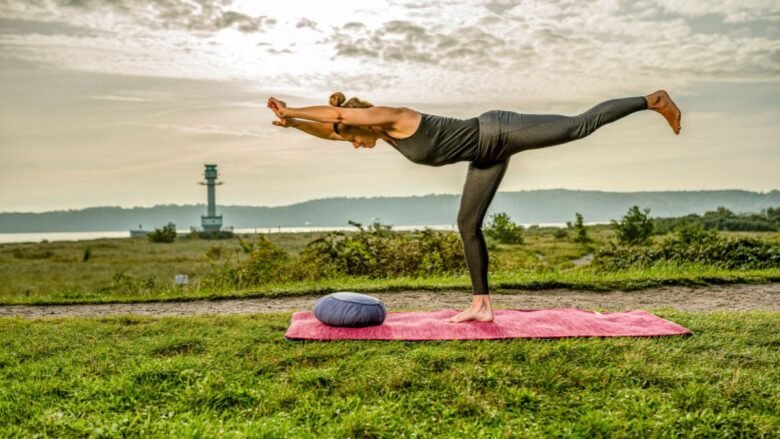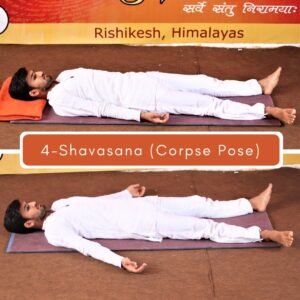The best part is that most people think that yoga is a soft form of exercising and stretching, which can also be incorporated in an efficient strength-building program. Yoga does not need weight like in weight lifting to help you exercise and that is the reason why it takes advantage of your body weight as resistance in exercising and this helps to make your body strong compared to the use of weights.
The movements in and out of poses and maintaining a pose stretch muscles that you do not usually exercise. It toughens both the mind and the body through regularity, which gives an all-round foundation of fitness and well-being.
How Can You Build Your Strength Through Yoga?
The yoga concept of power can be explained by regularity. Exercise at any pace, including as little as 20 or 30 minutes a day, can contribute to muscle acclimatization and strength gain. The body is more efficient in holding difficult positions and in the proper distribution of weight over time involved.
A schedule ensures steady growth in the long term. The better your stamina is after every exercise, the deeper postures are easier to achieve. The issue of consistency is indeed a key to achieving the measurable power of the effects and long-term consequences, just like in any other activity.
1. Core Strength with Yoga
To achieve stability and overall body strength, one must have a strong core, and yoga provides plenty of chances to obtain that. Specifically, Dolphin, Boat Pose and Plank pose the abdominal and back muscles. A tight core and balance are a challenge every time you hold these poses.
You feel more relaxed and balanced and are able to stand upright like in yoga unlike crunches. A properly positioned core enhances the degree of stability and control in the course of daily movement, aids other yoga poses, and aids the prevention of injuries.
2. Arm and Shoulder Strength
The shoulders are also strengthened and bring in the balance position, like side planks and handstands. Unlike the situation in individual gym sessions, yoga enhances overall functionality, as different muscle groups are strengthened at the same time. The continuous exercise will make your arms and shoulders stronger and more flexible, forming an all-over toned upper body.
Another benefit of yoga is that it strengthens the upper body without a heavy weight. Chaturanga, Downward Dog, and Crow pose are some examples of matches that condition the arms, shoulders, and chest. By immediately switching positions, as well as by maintaining these positions, you can build stamina and eventually shape up the muscles.
3. Leg Power and Stability
The majority of yoga practices involve a lot of leg work, and hence they are ideal to work out on the lower body. Poses that use the thigh, calves and glutes include Warrior II, Chair and Triangle pose. Including Tree Pose or Eagle Pose, stability provides an opportunity to get familiar with excellent postures, and could also get stronger with small supportive muscles.
These are beneficial in stamina and suppleness of the legs. Yoga does not strain the joints much as high impact exercise will give your legs even more strength. It maintains all degrees of fitness and renders it endurance and resistance.
4. Mental Strength and Endurance
Besides making the body stronger, yoga makes one mentally tougher. Focus, determination and the ability to disregard pain are necessary to sustain difficult poses. This is practiced with a gradual increase in the practice and builds up the mental strength and endurance to handle stressful conditions without panic.
The association of mind and body improves when practitioners do yoga since yoga brings the aspect of mindfulness. Besides the mat, this mental preparedness is applicable in the workplace in terms of concentration, daily endurance and the pursuit of succeeding in the face of obstacles.
5. Combining Strength and Flexibility
Yoga is extraordinary since it can build up strength without losing flexibility. Whereas in weight training, muscles are occasionally strained, in yoga, muscles are stretched and made strong. Bridge, Half Moon, and Warrior III are examples of poses when openness and stability are required.
To this balance, there is an aversion to stiffness and the reduction in the probability of damage. Muscles that are flexible yet strong are the best at performing sports activities and other day-to-day tasks in life. Yoga is a tried and tested guarantee of functional fitness since it is a blend of both flexibility and strength.
Conclusion
Stability, resilience and balance are not any less significant than physical strength as far as yoga is concerned. Doing Yoga on a daily basis helps you to stay agile and with sufficient ease to move your joints, the bonus would be increased body strength in soft tissues such as the arms, legs, mind and core.
Anybody can do it, and it entails a body workout that does not require to use machinery. It allows strength gains in the long term regardless of whether you are training to develop posture or gain strength in your daily activities. Yoga to gain strength provides the body and the mind with the power of a comprehensive exercise program.
Read Also:-




